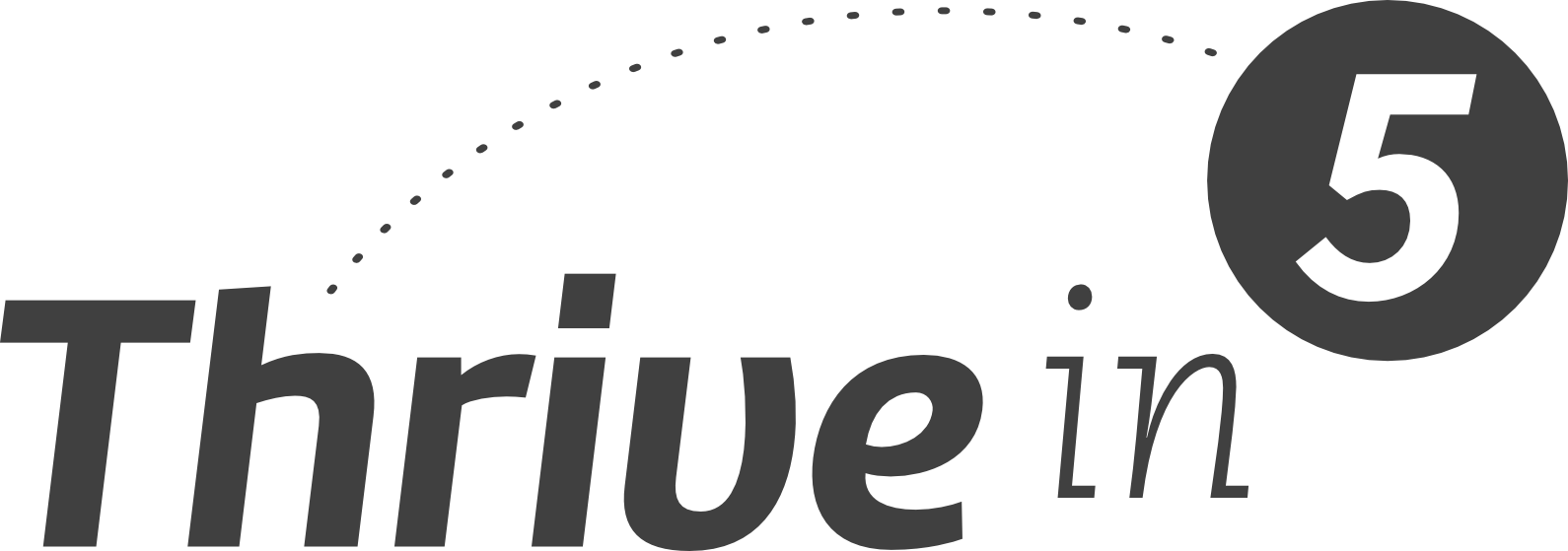
Thrive in 5 – Physical
Developing an Exercise Routine – Part One
Faith is active – it is demonstrated by what we do. As the Scriptures declare: “Faith by itself, if it is not accompanied by action, is dead.” (James 2:17). Applying this spiritual principle to our physical lives suggests that merely thinking about an exercise program falls short if we do not actually exercise. So, let’s get started! In a concise, two-part guide, I will recommend several key components to implement in your exercise program. Below are the first five presented by David Lewis, associate professor of Houghton College:
- Identify your objective. What is the objective you wish to achieve in your exercise program? Once a clearly defined objective is determined, then your program can be designed to fit it accordingly. An example of a broadly stated objective is, “to develop an overall full-body fitness program.” More narrowly defined statements might include, “to increase cardio-endurance fitness” … “to tone muscles in the core and lower body” … “to gain strength in the upper body” … “to lose ‘x’ pounds while toning muscle” … the list and variations are endless. You decide the desired outcome and then a program is designed specifically to meet your objective.
- Identify your approach. What is your best plan of action? What resources do you have available? How much time do you have to invest? Will your program need modifications to account for health or physical limitations? Will your program objective best be served through one of the following?
- Cardio equipment: bikes, treadmills, steppers, etc.
- Weight resistance: free weights, resistance machines, resistance bands
- Physical activities: walking, jogging, biking, running, swimming, hiking
- Dynamic power exercises, exercise classes, water aerobics
- Identify the best approach for accomplishing your objective.
- 3. Determine your time. How much time do you have to invest? A good starting point would be a 30-minute program. However, 15 minutes is better than zero minutes. How frequently you work out will be determined by your objective statement. Some programs are daily, while others are every-other-day. When is the best time of day to work out? My suggestion: whatever best fits your schedule and lifestyle.
- 4. Maintain good form: Be sure to utilize proper form when exercising. If utilizing resistance machines or weights, maintain smooth controlled movement. Perform exercises with full range of motion so that muscles are fully extended and contracted with each repetition. A general breathing recommendation is to exhale during the greatest exertion of the exercise and inhale during the concentric phase (when lowering the weight). Exercise clothing should be comfortable and allow freedom for movement throughout your program. You should feel good about what you wear and how you feel about yourself during your program. By exercising with a partner you can assist each other to make sure that proper form is being maintained.
- 5. Exercise etiquette: If working out in a community gym or fitness facility, share equipment. Offer to let others work between your sets; exercise equipment is for exercise, not a place to sit for long rest periods, conversations or text messaging. Remove weight plates off equipment when you are done. Leave the bar or other equipment unloaded and ready for the next person. After use, return equipment to its proper place. Do not attempt to converse with someone who is actively exercising (allow them to focus on what they are doing). Practice personal hygiene by washing your hands before and after utilizing equipment. If you are sick, stay home and focus on getting well – be considerate of the health of others.
The second of this two-part series will focus on different types of exercise programs. Overall, you have many options. A primary encouragement – get started!
To learn more about exercising, explore the following links: (We are not in agreement with everything here, but there are some good points and each is worth a discerning look):
- “List of Exercises, Goals & Objectives” … from LiveStrong.com
- Video: “3 Good Foods Gone Bad” and “4 Natural Fat Loss Helpers” …
- “How to Guarantee Your Workout is Always Working … the FITT Principle”
- “Exercise for Older Adults” …
- “Weight Training Do’s and Don’ts of Proper Technique” …
- “Gym Etiquette 101: Don’t Break These 29 Unwritten Rules” …
- Physical contributor: David B. Lewis, Associate Professor at Houghton College
- Executive editor: Russ Gunsalus
- Curator of content: Dave Higle

